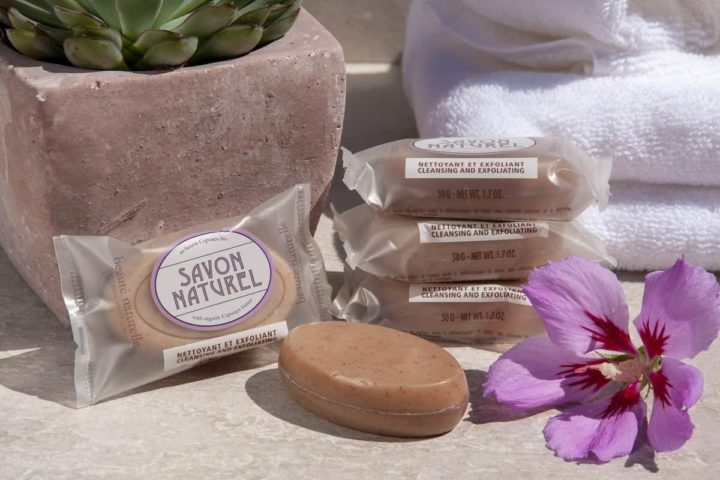Sustainable Papers: Sylvicta by Arjowiggins

A few weeks back, we set out the key factors brands and designers should take into consideration when exploring and selecting sustainable papers.
From energy and water consumption to carbon emissions and recyclability, it is a simple checklist against which we can judge the suitability of the material for a particular brand or project.
Taken in one go, however, the deluge of information can feel overwhelming. If you’re asking yourself, ‘Where do I start?’, then don’t worry: Nirvana CPH is here to help.
Over the coming weeks, we’ll be providing real-world examples of papers and manufacturers that are pushing the envelope (no pun intended) when it comes to delivering materials that benefit people and planet alike.
As well as exploring the technical aspects of production for each paper, we’ll be offering a take on how brands and designers can utilise these materials to drive brand equity and tell truly sustainable stories.
SYLVICTA BY ARJOWIGGINS
Our first choice is Sylvicta, from Anglo-French manufacturer Arjowiggins.
Launched only a couple weeks ago, Sylvicta is a naturally translucent barrier paper that is positioned to replace plastics across a variety of uses and sectors. Its barrier and technical properties are on par with, and in some cases outperform, those of plastics, and provide a perfect alternative to plastics in food and cosmetics packaging – a real innovation for these industries.
It challenges flexible plastics and multi-material packaging by offering a fully recyclable, marine-degradable and home compostable food-contact barrier paper, produced using only renewable raw materials. Not only can Sylvicta successfully preserve the freshness of packaged products, but it can do so while ensuring a limited impact on the environment.
The name ‘Sylvicta’ has its origins in two Latin words – ‘sylva’, meaning forest – and ‘invicta’ – meaning undefeated or unconquered. ‘Invicta’ is the motto of the county of Kent, where the paper is manufactured. Taken together, ‘Sylvicta’ means ‘the forest that conquers’ – and it really does conquer its plastic competition.
But let’s get into the nitty-gritty. Why does Sylvicta make our list?


SUSTAINABILITY:
1. Source of fibre: 100% virgin fibre from sustainably managed forests that complies with all regulations and carries FSC and PEFC certifications.
2. Making process: Produced in Chartham Mill in Kent, UK. On site, micro-fibrillated cellulose fibres are obtained through precision fibre refining from wood pulp. With micro-fibrillation comes intense inter-fibre hydrogen bonding. This allows for a strong, dense and clean paper without any need for fillers or transparentising additives. By taking virgin fibres to a microscale, Chartham Mill can produce a paper with exceptional natural bonding without the need for harmful chemicals.
3. Energy: Raw material comes from local pulp suppliers, reducing carbon emissions during transportation and supporting the local economy. This, and all other consumed energy, is balanced with The World Land Trust.
4. Water: Like the majority of other mills in the industry, Chartham Mill sits next to a river. Under a number of strict regulations, the water that it ‘borrows’ for paper production must be returned to the river in the same state – or cleaner – than when it was extracted. This way, the mill ensures that no harmful chemicals are discharged into the environment.
5. Carbon emissions: This paper is Carbon Neutral and can be referred to as Carbon Balanced Paper.
6. Recyclability: At the end of its life this material can be recycled, is biodegradable and certified compostable.
SUPPORTING INFORMATION:
7. Functionality: Sylvicta is positioned to replace plastic laminates, pouches and wraps, among many others. This gives brands a relevant, scalable and ready-to-market material that is a more circular alternative to synthetic surfaces currently used in packaging industry. Its unique properties include: (a) a high barrier to oxygen, odours, moisture and mineral oils, and; (b) high preservation of aroma, freshness and flavour of the product.
8. Finishing: Suitable for all types of traditional printing and finishing such as offset, flexography, embossing, hot foiling and die-cutting. We always recommended pre-testing any techniques as part of a prototyping stage; for this material, we recommend paying special attention when using a digital or gravure printing method.
9. Weights: 42, 52, 62, 72, 82, 92, 102, 112, 140, 160 and 180 gsm
10. Applications: A range of packaging elements including: overlays, windows (e.g. in food, cosmetics, toys, gaming, jewellery boxes), wrapping, laminating, flow packs, pouches, sealed bags, labels, bespoke designs, garment bags, stickers (packaging, e-commerce boxes, experience activation collateral) and more.
11. Sustainable story: As a result of using renewable raw materials, it reduces the amount of plastic used (based on non-renewable resources) that cannot be recycled. This paper can also be recycled, and will therefore allow for the necessary resources to be reused as a new generation of paper products.
Despite its relatively recent launch, this new material has already generated a lot of interest as it has a strong sustainable story behind it. We are definitely amongst many looking who are forward to working with it.
A link to the manufacturer’s website can be found here.
If you like what you see, and require further information on any of the papers featured in our series, please contact info@nirvanacph.com. We’ll be more than happy to help you tell your brand’s sustainable story.
Posted 01 November, 2020 by Katie Kubrak